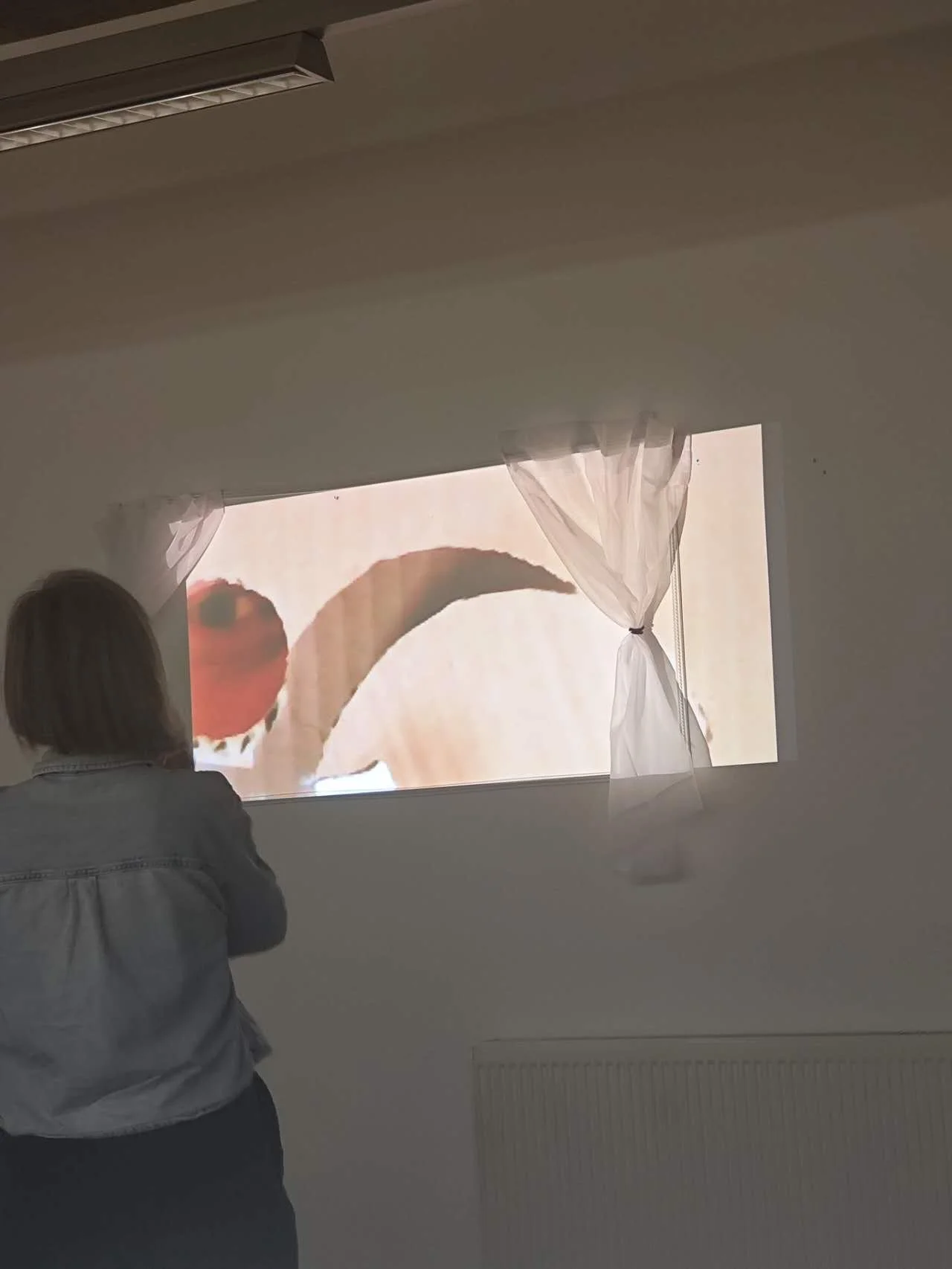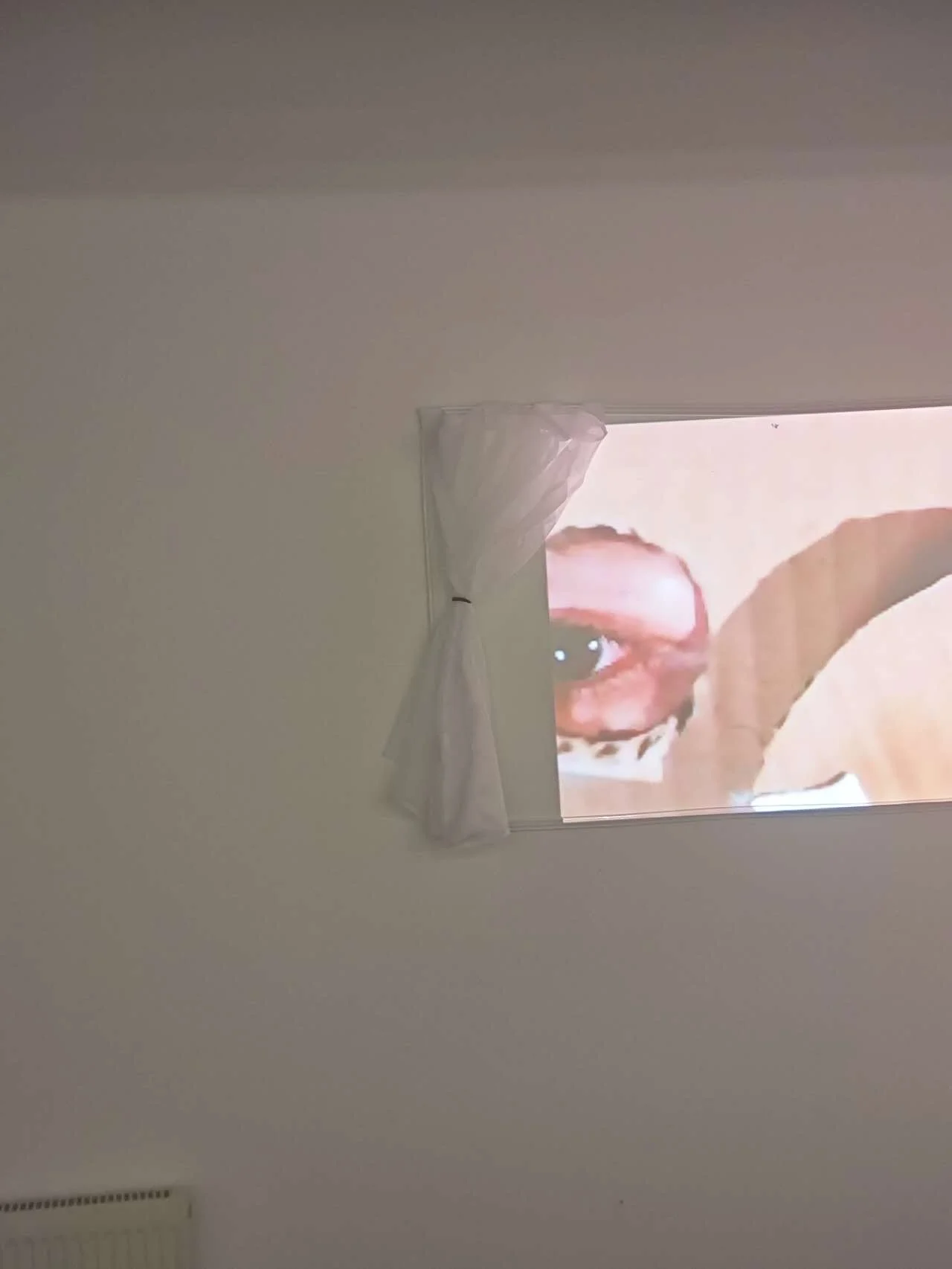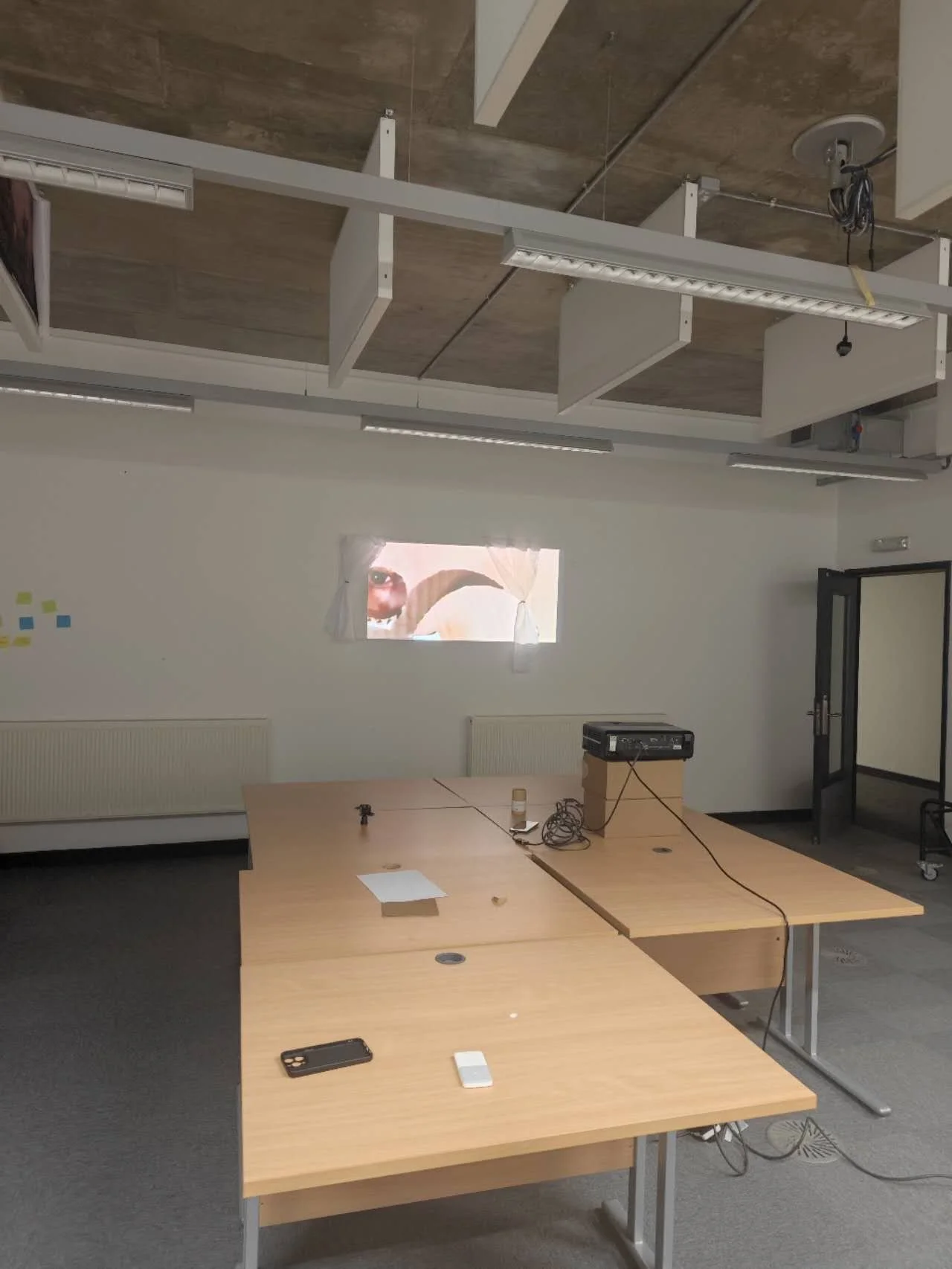
“Watch Out!”
The Watchers or The Watched?
This interactive installation integrates live-feed technology, Arduino systems, visual communication design, and spatial semiotics to interrogate the unequal power dynamics inherent in the act of looking, specifically within the digital panoptic structures we now inhabit.
Threefold Spatial Narrative
At the heart of the work is a threefold spatial narrative: the “first space” is the physical exhibition environment; the “second space” is the real-time image of the participant captured from behind; and the “third space” is a projected close-up of the participant’s eye as they engage with the installation. This layered spatiality, supported by ESP32-CAM and infrared sensor modules, was designed to rupture conventional spectator-subject relationships, immersing participants in a destabilizing feedback loop of seeing and being seen. As such, the installation reflects on surveillance not as a distant institutional apparatus but as an everyday affective and embodied condition.
The theoretical backbone of this project draws from critical surveillance studies (Gilliom & Monahan, 2013), digital culture (Han, 2017), and visual semiotics (Barthes, 1977). In particular, Jacques Rancière’s notion of the “emancipated spectator” (2009) served as a provocation: can the viewer in surveillance art be more than passive, and if so, how might they be refigured as both subject and agent? This informed my approach to spatial design and viewer interaction, aiming to resist deterministic roles and instead create a space for ethical dissonance and conceptual awakening.
During the initial stages of development, I produced two booklet-style visual artefacts: Glass House: The Growing Openness of Private Domain, and A Very Short Introduction to Surveillance Art. These were displayed alongside the installation to provide critical context, inviting audiences to reflect on historical genealogies of surveillance and its contemporary entanglements with neoliberal transparency and performativity. The design of the printed matter emphasized rhetorical structure and visual logic, drawing from design semiotics to heighten critical engagement.
One of the most technically and conceptually innovative components of the work was the Arduino-controlled peephole device. When a viewer approaches, an infrared sensor triggers the opening of a concealed cover, enabling the camera to capture a close-up of the participant’s eye. Simultaneously, a second live camera records their back, which is then displayed within the space. This dual camera system creates a moment of uncanny mirroring: the spectator becomes the spectacle, caught between voyeurism and vulnerability.
The methodological structure of this project combined design-based research with speculative prototyping. Through iterative sketching, spatial modeling, and coding, I employed a practice-led approach to knowledge production. My use of Arduino was not merely functional but conceptual: it reflects the broader ethos of critical making, where technological systems are repurposed for reflexive ends. The use of ambient elements—such as environmental soundscapes and physical materials like wood and acrylic—contributed to the affective layering of the space, underscoring the sensory and psychological dimensions of surveillance.
Crucially, the installation was not meant to resolve the contradictions it exposed. Rather, it sought to dramatize the irresolvable tensions of digital visibility: the desire to see versus the fear of being seen; the will to control versus the experience of being controlled. It is within this contradiction that the ethical and political potential of the project emerges.
In the final reflection, I positioned “Watch Out! The Watchers or The Watched?” as both a pedagogical space and a speculative environment. It asks not only how surveillance operates technically and institutionally, but also how it feels, how it reorganizes space, and how it produces subjects. In doing so, I hope to contribute to a broader discourse that sees critical design not just as commentary, but as intervention—a means to challenge dominant infrastructures and imagine alternative modes of perception, interaction, and relationality.
The Watchers or The Watched?
Through this project, I have deepened my understanding of how artistic practices can intersect with sociotechnical critique. By leveraging interactivity, narrative space, and sensory design, I aimed to craft an experience that is not didactic but affective, not merely critical but transformative.
















